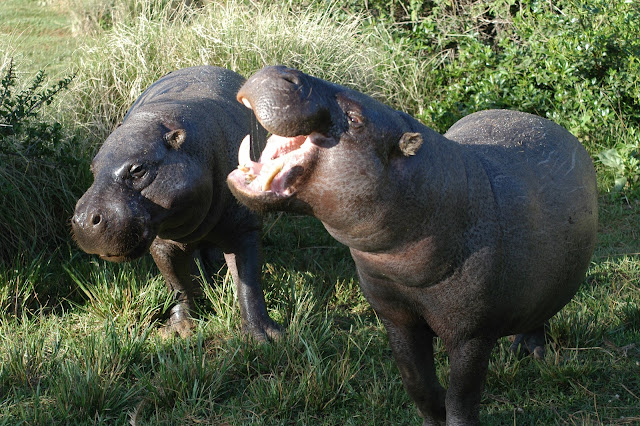Pod:
- "Pod" is a general term used to describe a group of hippos. It's a commonly used collective noun for various animals and denotes a gathering or assembly of individuals.
Crash:
- "Crash" is another term used to describe a group of hippos. It's a vivid and descriptive term, reflecting the potentially powerful and noisy nature of a group of hippos.
Herd:
- "Herd" is a more generic term that can be used to describe a group of animals, including hippos. However, "herd" is often associated with ungulates or grazing animals rather than semi-aquatic creatures like hippos.
Bloat:
- "Bloat" is a term used to describe a larger gathering or congregation of hippos in a specific area. It's particularly used when referring to a large number of hippos in close proximity, such as near a water source.
Additional Interesting Facts about Hippos:
Semi-Aquatic Lifestyle: Hippos spend a significant amount of time in the water, usually during the day, to keep their large bodies cool. They are excellent swimmers and can stay submerged for up to five minutes.
Territorial Behaviour: Hippos are territorial and often mark their territory with dung, using their tails to spread it. This behaviour helps them establish dominance and warn other hippos to stay away.
Diet: Hippos are herbivores and primarily feed on grass. They consume a large amount of vegetation in the evenings, sometimes up to 150 pounds (68 kilograms) in a single night.
Large Size: Hippos are one of the largest land mammals, with adult males weighing between 1,500 to 4,500 kilograms (3,300 to 9,900 pounds) and females weighing slightly less. Despite their size, they are surprisingly agile.
Teeth and Tusks: Hippos have large canine teeth and sharp incisors. The lower canines can grow up to 1.2 meters (4 feet) long, and their teeth keep growing throughout their lives.
Conservation Status: Hippos are listed as vulnerable by the International Union for Conservation of Nature (IUCN) due to habitat loss, poaching, and conflicts with humans. Conservation efforts are underway to protect these iconic African animals.
Hippos are fascinating creatures with a range of behaviours and adaptations that make them intriguing subjects of study and observation in the wild.
Source: Some or all of the content was generated using an AI language model


No comments:
Post a Comment